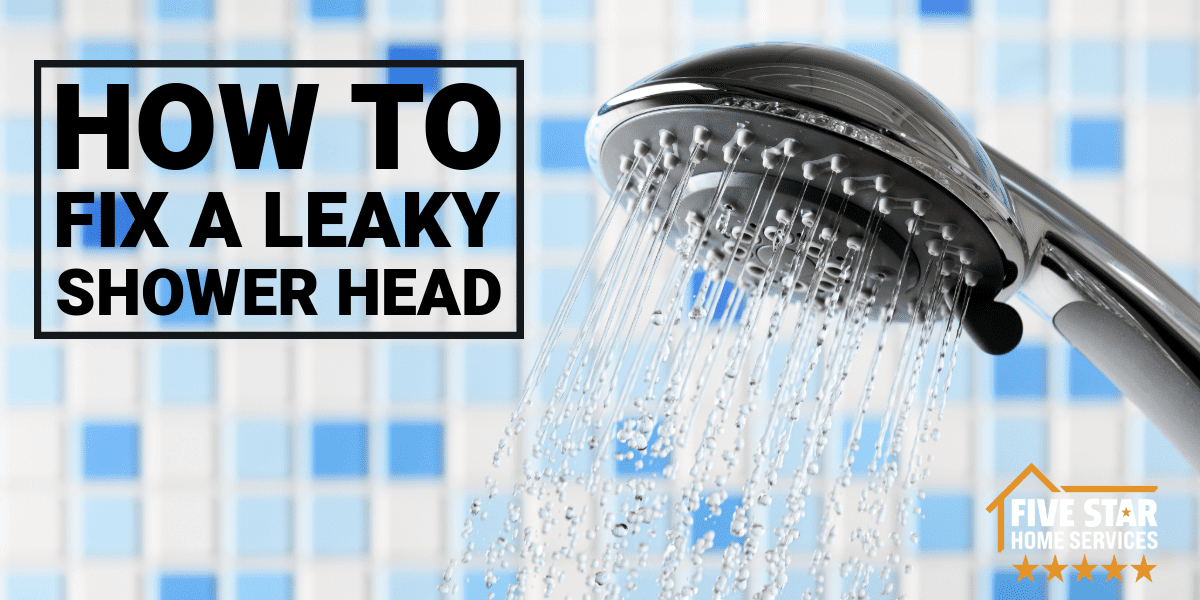You notice that water is dripping from your shower head even though it is turned off. Or water comes out in odd places when the shower is turned on. Although your shower head still works, the leaky situation can be annoying. Is it worth taking the time to fix the leak, then? Leaks are a common plumbing problem. They can occur in most plumbing fixtures such as faucets and pipes. Letting water continue to drip unintentionally is not a wise move, as wasted water goes down the drain, translating to higher water bills and less money in your pocket. Depending on the cause, the impact of the leaky shower head to your home’s plumbing system may be substantial. Try to determine what is causing the leak and you may be able to deal with this problem yourself before it becomes a major issue.
Causes of a Leaking Shower Head
- Buildup of minerals. This occurs with using hard water. Minerals accumulate over time and may easily clog up the small holes in the shower head or adjacent pipes. This is turn will cause water to back up and look for other possible exits.
- Defective shower cartridge. When the leak or drip happens long after the shower has been turned off, there is a big possibility of a defect in the washer or cartridge in the faucet valve. You need to check if the valve needs replacement or only new washers or grommets.
- Obstruction and/or increased water pressure in the tub spout could cause the shower head to drip while the tub faucet is on. With either an obstruction or increased water pressure, the tub spout cannot allow water to exit, forcing the water to go upward—toward the shower head.
Steps in Fixing Your Leaking Shower Head
Inspect and clean the showerhead
You may notice signs that the shower head will need an update or replacement. Look at the showerhead’s different sections and determine the leak’s source. If cracks are present, or the physical integrity of the shower head is doubtful, it needs to be replaced. Clean the shower head to ensure that mineral buildup or any type of residue is not causing the leak. First, wipe the nozzle and areas around it. Use a toothbrush to clean with more detail. Next, to clean the shower head without having to remove it from its arm, fill an appropriately sized plastic bag or zip lock bag with a 50/50 solution of vinegar and water. Submerge the shower head in the solution by securely wrapping the plastic bag around the shower head with a rubber band. Wait at least 30 minutes or overnight. Turn on the shower head and check again to see if this fixed the leaking issues.
Remove the showerhead
If soaking in vinegar solution did not fix the leaking problem, then it is time to remove the shower head. First, turn the shower off. Next, loosen the shower head from its arm in the counter-clockwise direction. If this is a bit difficult to do, you will need to wrap the shower head with a cloth (to protect its finish), and use pliers to unscrew it.
Clean the shower head and shower arm
Another way to clean your shower head using vinegar is by submerging it in a bowl of vinegar solution, especially if you remove the shower head from its arm. After soaking, clean the shower head with a brush to make sure that any residue is removed. Clean the shower arm with a cloth and warm, soapy water, or an old toothbrush, as it will most likely have old and peeling thread seal tape which you need to remove. If the shower arm is worn or corroded, it needs a replacement.
Inspect seals
The washers and O-rings on your shower head and its connections may have disintegrated over time. In that case, they need to be replaced so that you are ensured that they are creating watertight seals, preventing leaking.
Use thread-sealing tape
To ensure a better seal, wrap the threads of the newly cleaned shower arm with a plumber’s tape or thread-sealing tape. Replacing the tape is recommended, especially when disassembling the shower head. Go around the threaded tip of the shower arm in a clockwise motion a few times, applying pressure from your finger to ensure that the tape is secure.
Reinstall or replace the showerhead
Put the shower head back onto the shower arm and securely tighten it. Turn on the water to test it again for leaks. If you notice leaking while the faucet is on, consider replacing the shower head with a new one. Remember, if the leaking happens while the faucet is off, it is a different story. As mentioned earlier, you must replace the shower cartridge inside the faucet body.
These steps to address a leaky shower head are doable with the right tools and enough time. If an emergency arises or you want the process to go smoothly and be handled professionally, give Five Star Home Services a call. Our trained and licensed plumbers will ensure your shower head will perform excellently for a long time. Call Five Star Home Services now at (833) 405-8009.

